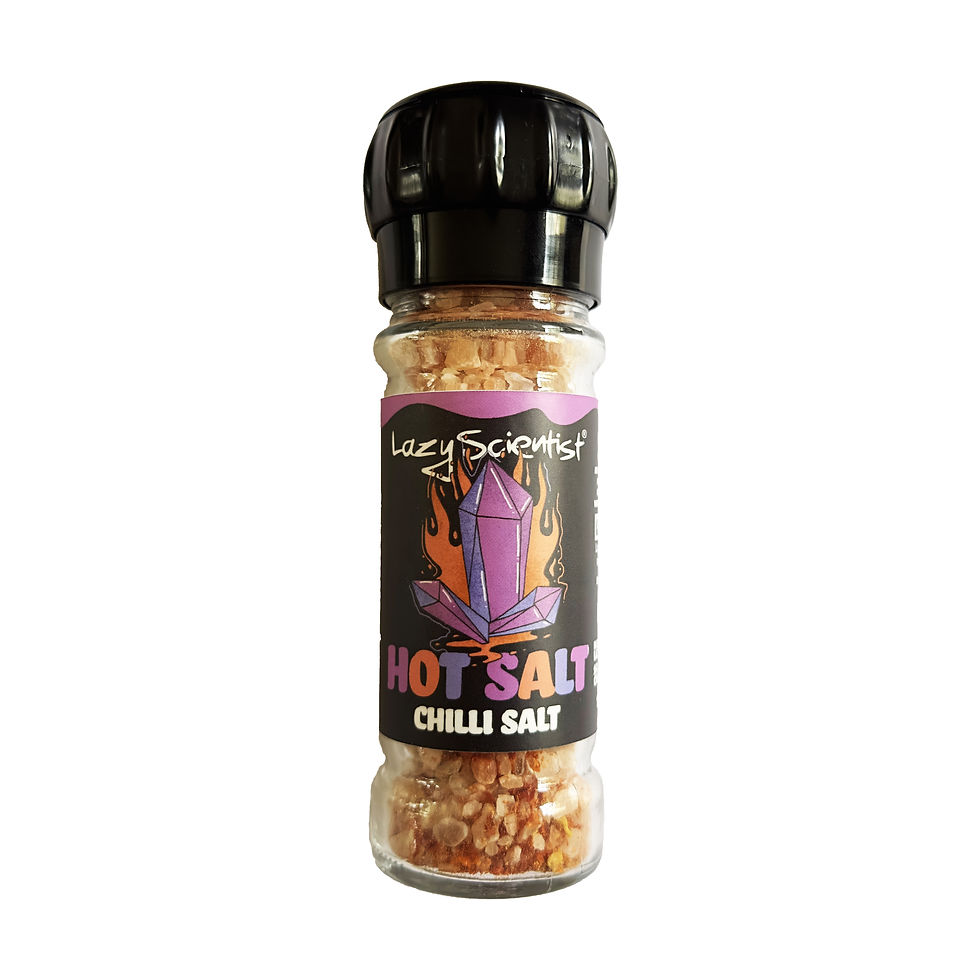Spice Up Your Cooking: A Guide to Using Chilli in the Kitchen
- lazyscientist
- Jul 10, 2023
- 3 min read
Updated: Mar 5, 2025

Chilli peppers are more than just a source of heat; they are an essential ingredient that adds depth, flavour, and a touch of excitement to countless dishes. Whether you prefer a mild kick or an intense fiery experience, incorporating chilli in your cooking can take your culinary creations to new heights. In this blog post, I'll explore the art of using chilli in cooking, from selecting the right peppers to understanding heat levels and exploring various cooking techniques. Get ready to add some sizzle to your kitchen!
Let's get started!
Selecting the Right Chilli Peppers
There is a vast array of chilli peppers to choose from, each offering unique flavours and heat levels. Here are a few popular varieties and their characteristics:
Mild & Tangy: If you're new to using chilli or prefer milder heat, opt for varieties like jalapeño, Dutch Red, or Anaheim peppers. They bring a pleasant warmth and subtle tang to dishes without overwhelming the palate.
Medium Heat: Serrano, cayenne and green finger chilli peppers provide a moderate level of heat, striking a balance between flavour and spice. They are versatile and work well in salsas, stir-fries, and marinades.
Fiery: For those seeking a bold heat experience, habanero, Scotch Bonnet, or Thai bird's eye peppers deliver a fiery kick. Use them to add fiery heat to sauces, curries, or spicy dishes.
Insane & Intense: These tend to be of more use for comedic value when you want to screw over your best mate, but are gaining traction as global tolerance levels increase and shows such as Hot Ones highlight the fun you can have doing chilli challenges.. Keep your eyes out for the Carolina Reaper, Dragon's Breath or Primotalii for big hitting fruity flavours backed up with out of this world levels of heat.
Heat Levels & Scoville Scale
Understanding the heat levels of different chilli peppers is crucial for achieving the desired spiciness in your recipes. The Scoville scale measures the heat of peppers, with higher values indicating more intense heat. Consider the heat level of the peppers you choose and adjust quantities accordingly to suit your taste preferences.
Cooking Techniques to Harness Chilli Flavour
Chilli peppers can be used in various ways to infuse your dishes with their distinctive flavours and heat. Here are some techniques to incorporate chilli into your cooking:
Sautéing and Frying: Add sliced or diced chilli peppers to hot oil or butter for a quick sauté. This releases their flavours and infuses the oil, which can then be used as a base for sauces, stir-fries, or even drizzled over grilled vegetables.
Roasting and Grilling: Roasting or grilling whole chilli peppers intensifies their flavours and adds a smoky element. Use roasted peppers in salsas, sauces, or purees, or incorporate them into dishes like stuffed peppers or fajitas for an extra layer of depth.
Infusing: Infuse oils, vinegars, or even alcohol with chilli peppers to create flavoured bases for dressings, marinades, or cocktails. Simply add dried whole or crushed chillies to your desired liquid and let the flavours meld over time.
Balancing & Pairing Flavours
Chilli peppers work best when balanced with other flavours in your dishes. Consider the following tips for harmonious flavour combinations:
Sweetness: Pair the heat of chilli with sweetness to create a delicious balance. Use ingredients like honey, maple syrup, or fruits like mango or pineapple to add a touch of sweetness to offset the spice.
Acid: Acidic ingredients like lime juice, lemon juice, or vinegar can help cut through the heat and enhance the flavor of chilli peppers. Add a squeeze of citrus or a splash of vinegar to your recipes to brighten the overall taste.
Creaminess: Creamy ingredients like coconut milk, yogurt, or sour cream can provide a soothing contrast to the heat of chilli. Use them in sauces, dips, or dressings to add richness and temper the spice.
Conclusion
Adding chilli to your cooking is a thrilling way to elevate your dishes and explore a world of vibrant flavours. With careful selection, understanding heat levels, and implementing various cooking techniques, you can harness the power of chilli peppers to create culinary masterpieces that tantalise your taste buds. So, embrace the spice, experiment with different varieties, and let the heat of chilli transform your cooking into a bold and unforgettable gastronomic adventure.
Please leave a comment below if you have any questions.
The Lazy Scientist


















Comments